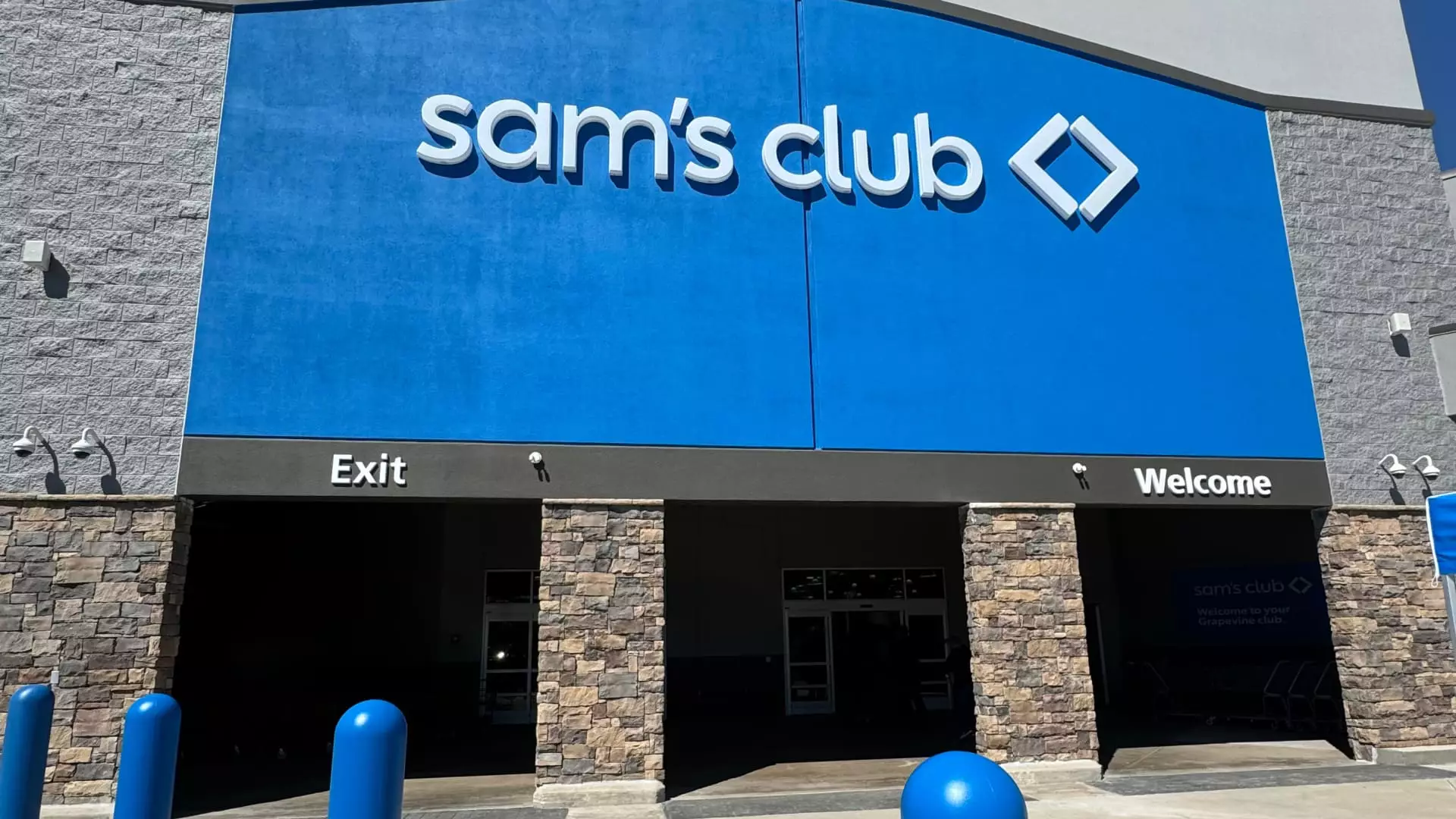As the retail landscape evolves, so too do consumer expectations. Sam’s Club, the membership warehouse club owned by Walmart, is taking significant strides toward a fully digital shopping experience, exemplified by its latest location in Grapevine, Texas. Here, the traditional shopping experience is transformed into a high-tech journey, devoid of traditional checkout lanes. Instead, shoppers are greeted with a state-of-the-art all-digital store model that marries convenience with technological advancement.
The Grapevine store, scheduled to open in mid-October, offers a glimpse into the future of shopping. Customers will utilize the Scan & Go mobile app to ring up their purchases while strolling the aisles, effectively eliminating the need for traditional cash registers. This emphasis on technology highlights the club’s ambition to streamline the shopping process and improve customer satisfaction. Chris Nicholas, the CEO of Sam’s Club, explained that this transformation is not merely about upgrading technology; it reflects an overarching vision of creating an entirely digitized shopping experience.
With e-commerce continuing to penetrate various sectors of retail, Sam’s Club is keenly aware of the need to adapt. The club has historically been known for its warehouse model, characterized by bulk purchasing and value. However, in a market where immediacy reigns supreme, catering to digital-savvy consumers is now paramount. The store will not just leverage digital checkout systems; it will feature a section dedicated to online-only items, showcasing everything from elaborate holiday decorations to luxury goods such as lab-grown diamonds. By integrating digital experiences with physical shopping, Sam’s Club is crafting a unique hybrid model that appeals to modern consumers.
Interestingly, the club’s layout has also evolved to support its e-commerce strategy. With significantly more space allocated for preparing e-commerce orders, Sam’s Club aims to enhance its curbside pickup and delivery services. This operational redesign signals a commitment to not only compete with giants like Costco but potentially outpace them by catering to changing shopping habits.
To maintain competitive advantage, Sam’s Club is actively implementing strategic changes, including the consolidation of private labels under one brand—Member’s Mark. With a focus on proven products and consolidating its offerings, the club is sharpening its product line to appeal to its customer base more effectively. This strategic tightening is complemented by plans to open approximately 30 new locations in the next five years, showcasing a significant investment in retail growth amid the digital shift.
Assessing sales performance, the latest figures indicate a promising growth trajectory for Sam’s Club. The outlet has reported a 5.2% increase in comparable sales, driven by an impressive 22% growth in e-commerce transactions. This success is not merely serendipitous; it reflects a carefully curated approach to meeting consumer demand while simultaneously embracing modern retail trends.
Despite the exciting prospects, the transition to a tech-centric shopping model is not universally welcomed. As shoppers venture into this new experience, hesitations persist, particularly concerning customer service in a digital-first retail environment. Some customers fear that the removal of traditional checkout methods may alienate those who prefer human interaction or who encounter issues during their shopping experience.
Tiffany Zuniga, a local shopper, expressed her apprehension regarding the reliance on technology, voicing concerns about potential complications if customers scanned the wrong items or required assistance. Such sentiments illuminate the need for balance; as Sam’s Club introduces novel technologies, a commitment to maintaining high-quality customer service remains vital.
In anticipation of the grand reopening, Sam’s Club is taking proactive steps to educate customers on using the Scan & Go app, ensuring personnel are available to assist those unfamiliar with the technology. This customer-centric approach not only alleviates consumer fears but also enhances the overall shopping experience.
As Sam’s Club embarks on this notable transformation, it stands at the intersection of tradition and innovation. With efforts to harness technology for a smoother, more efficient shopping experience, the warehouse club is not just reimagining its stores; it’s redefining what consumers can expect from membership clubs in the retail environment of tomorrow.
The journey of Sam’s Club exemplifies a broader trend within retail: the necessity to adapt to an ever-changing market landscape, underscoring the importance of digital proficiency. While vendors like Costco continue to dominate, Sam’s Club’s innovative strategies—focused on e-commerce integration and customer engagement—signal a determined push to establish a formidable presence in this competitive arena. As the digital shift unfolds, only time will reveal the lasting impact of these advancements on warehouse shopping and customer preferences.

